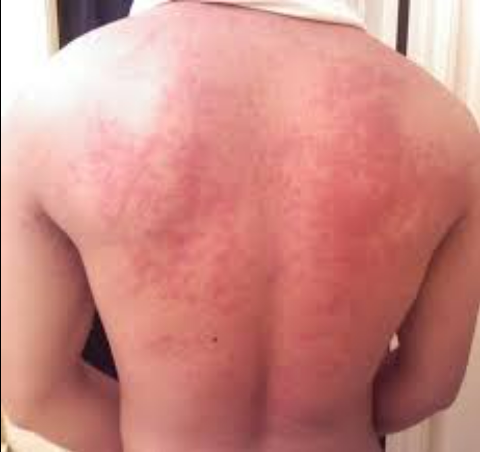The Chippewa County Health Department has issued an advisory to recreational swimmers
to be aware of possible infections with SWIMMER’S ITCH, which has been detected in
people swimming in the surface waters of Lake Superior in areas of Whitefish Bay off West
Lakeshore Drive/Curley Lewis Highway, and Waishkey Bay, in Bay Mills Township,
Michigan.
Swimmer’s itch, also called cercarial dermatitis, appears as a skin rash caused by an allergic
reaction to certain parasites that infect some birds and mammals. These microscopic
parasites are released from infected snails into fresh and salt water (such as lakes, ponds,
and oceans). While the parasite’s preferred host is the specific bird or mammal, if the
parasite comes into contact with a swimmer, it burrows into the skin, causing an allergic
reaction and rash. Swimmers are also advised to towel off vigorously immediately
after leaving the water to prevent swimmer’s itch.
Most cases of swimmer’s itch do not require medical attention. If you have a rash, you may
try the following for relief:
• Use corticosteroid cream
• Apply cool compresses to the affected areas
• Bathe in Epson salts or baking soda
• Soak in colloidal oatmeal baths, or use lotions containing colloidal oatmeal
• Apply baking soda paste to the rash (made by stirring water into baking soda until it
reaches a paste-like consistency)
• Use an anti-itch lotion, such as Calamine lotion
Though difficult, try not to scratch. Scratching may cause the rash to become infected. If
itching is severe, your health care provider may suggest prescription-strength lotions or
creams to lessen your symptoms.
It is advisable for individuals to not swim following a strong and persistent on-shore wind.
Children who continuously go in and out of the water are at a greater risk for contracting
Swimmer’s Itch.
Individuals who display signs of severe infection from swimmer’s itch are advised to seek
medical attention.
For information on Swimmer’s Itch, visit
https://www.cdc.gov/parasites/swimmersitch/index.html, or call Environmental Health at
(906) 635-3622
- Soo Theatre is proud to present Neil Simon’s RUMORS - July 2, 2025
- MSP Requests Public Assistance Locating Voluntary Missing Teen - July 2, 2025
- Ontonagon Man Arrested for Child Sexually Abusive Activity - June 27, 2025




